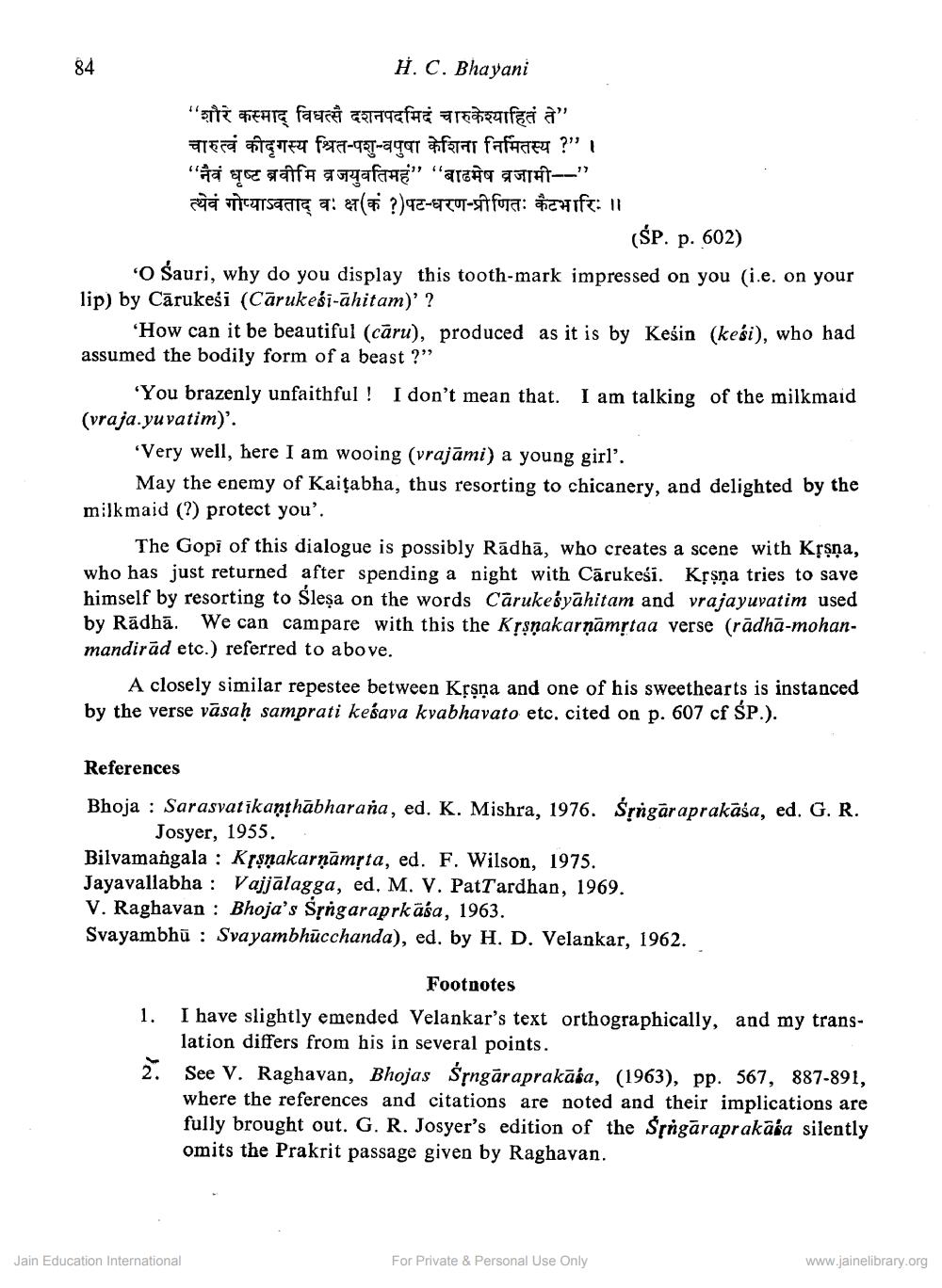________________
H. C. Bhayani
"शौरे कस्माद् विधत्सै दशनपदमिदं चारुकेश्याहितं ते" चारुत्वं कीदृगस्य श्रित-पशु-वपुषा केशिना निर्मितस्य ?" । "**rece nalfa aparazzi" "araha aa -” त्थेवं गोप्याऽवताद् वः क्ष(कं ?)पट-धरण-प्रीणितः कैटभारिः ॥
(ŚP. p. 602) 'o Sauri, why do you display this tooth-mark impressed on you (i.e. on your lip) by Cārukeši (Cārukesi-āhitam)' ?
How can it be beautiful (cāru), produced as it is by Kesin (kesi), who had assumed the bodily form of a beast ?”
'You brazenly unfaithful! I don't mean that. I am talking of the milkmaid (vraja.yuvatim)'.
*Very well, here I am wooing (vrajāmi) a young girl.
May the enemy of Kaitabha, thus resorting to chicanery, and delighted by the milkmaid (?) protect you'.
The Gopi of this dialogue is possibly Rādhā, who creates a scene with Kțşņa, who has just returned after spending a night with Cārukesi. Kțsņa tries to save himself by resorting to Sleșa on the words Cārukeśyāhitam and vrajayuvatim used by Rādhā. We can campare with this the Kršņakarņāmstaa verse (rādhā-mohanmandirād etc.) referred to above.
A closely similar repestee between Krsna and one of his sweethearts is instanced by the verse vāsaḥ samprati keśava kvabhavato etc. cited on p. 607 cf ŚP.).
References
Bhoja : Sarasvatikaạthābharana, ed. K. Mishra, 1976. Śrngāraprakāśa, ed. G. R.
Josyer, 1955. Bilvamangala : Krsnakarņāmsta, ed. F. Wilson, 1975. Jayavallabha: Vajjālagga, ed. M. V. PatTardhan, 1969. V. Raghavan : Bhoja's Srngaraprkasa, 1963. Svayambhū : Svayambhūcchanda), ed. by H. D. Velankar, 1962.
1.
Footnotes I have slightly emended Velankar's text orthographically, and my translation differs from his in several points.
See V. Raghavan, Bhojas Songāraprakāśa, (1963), pp. 567, 887-891, where the references and citations are noted and their implications are fully brought out. G. R. Josyer's edition of the Srngāraprakasa silently omits the Prakrit passage given by Raghavan.
Jain Education International
For Private & Personal Use Only
www.jainelibrary.org




